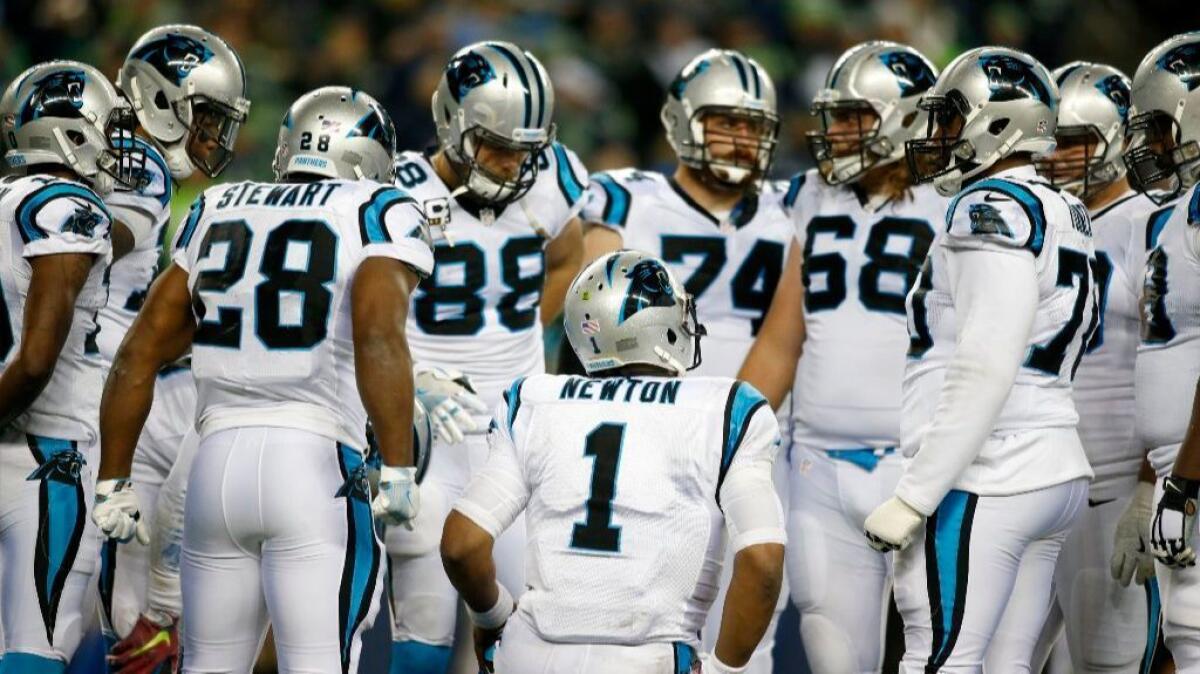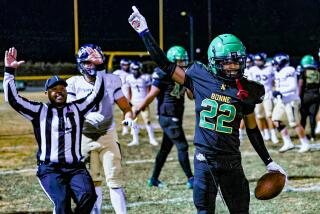Ask Farmer: Why do NFL players names only appear on the back of their jerseys?

- Share via
Have a question about the NFL? Ask Times NFL writer Sam Farmer, and he will answer as many as he can online and in the Sunday editions of the newspaper throughout the season. Email questions to: sam.farmer@latimes.com
NFL players wear numbers on the front and back, but their name appears only on their back. Why is that?
Pratap Patel, Irvine
Farmer: Although there might be room on the front of a jersey for a player’s last name, the nameplate across the shoulders seems like the natural place. It was only 1970 when the NFL started putting names on jerseys at all. The American Football League did that throughout the 1960s for a couple of reasons: to give its players more publicity, and to make them more identifiable in television broadcasts. There were some NFL purists who pushed back on the notion of adding names to jerseys when the leagues merged in 1970 — some didn’t want to give the AFL that victory — but fans and players took to the idea.
Technically, no one has worn his name on the front of his jersey. But there is a player who sort of wore his name on his front, back and sides — Hall of Fame center Jim Otto, who wore No. 00 for the Oakland Raiders.
“I can remember in training camp when the first Raiders got together, the guys used to call me ‘Ought’ instead of Otto,” he said. “It was, ‘C’mon over here, Ought.’ And ought was a zero.
“I thought it was our equipment manager who said, ‘Why don’t you have an ought put on your shirt?’ As we were sitting there talking somebody says, ‘Why don’t you have it ought-oh, which would be two zeros.’ I thought that sounded interesting so we did it. We had to get permission from the league.”
Precious few NFL players have worn that number, but another who did was receiver Kenny Burrough, who played for New Orleans and Houston in the 1970s. That inspired his golfwear endeavor called “00Wear.”
::
Forever, touchbacks have come out to the 20. Now they’re coming back to the 25. I was ready to adjust to that, but it seems like sometimes it comes out to the 20. So what happened? When did it change and why?
John Thompson, Downey
Farmer: The rule change was made this off-season, and it only applies to kickoffs, so punts into the end zone still come back to the 20. The kickoff change was made to promote safety, just another tweak that makes returns somewhat less enticing (even though they’re among the most exciting plays in a game). The move was similar to one the NFL made five years ago when it moved kickoffs from the 30 to the 35-yard line in hopes of producing more touchbacks. That worked. Before that change, teams returned 80.1% of all kickoffs, but that number dropped to 53.5% in 2011 and since has steadily declined.
Follow Sam Farmer on Twitter @LATimesfarmer
More to Read
Go beyond the scoreboard
Get the latest on L.A.'s teams in the daily Sports Report newsletter.
You may occasionally receive promotional content from the Los Angeles Times.











